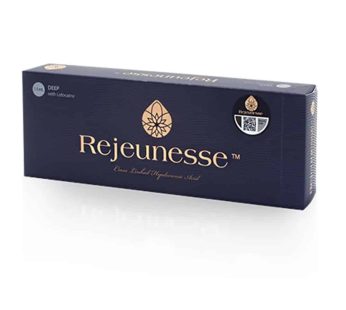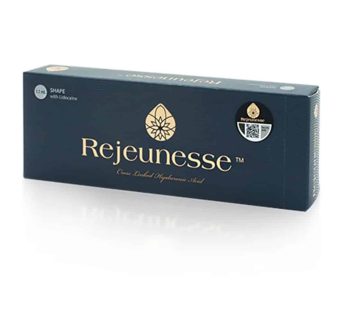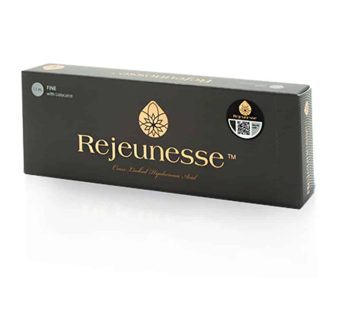Buy Hyaluronic Acid Dermal Fillers Online
what is Hyaluronic Acid Dermal Fillers?
Dermal fillers are injections used to smooth wrinkles on the face. Dermal fillers come in different types. Dermal fillers are usually injected by healthcare providers around the eyes, nose and mouth. This cosmetic procedure can produce immediate results and last for months or even years.
Dermal Filler Injections are a non-surgical cosmetic procedure. Dermal Fillers fill in SIC, smooth out lines and restore the volume of your face. These substances are injected under the skin by a healthcare provider.
Dermal Fillers can be used to improve the appearance of your face or to make it look more youthful. The elective treatment is usually completed in less than 30 minutes, with minimal recovery time. Results can be seen immediately, and they last from months to years, depending on where and what type of filler is used.
There are many types of dermal fillers. You will be able to discuss all of your options with your healthcare provider. Like any cosmetic procedure there are some risks. These include infection, bleeding, bruising and bruises. In general, health insurance policies do not cover elective cosmetic treatments such as filler injectables.
Why are dermal fillers used?
When you grow older, the body loses collagen. Collagen is found throughout your body. It is present in the skin, muscle, bone, and connective tissues. Reduced collagen causes your skin to become lax (loose). It also results in a loss of volume. Skin loses elasticity, becomes thin and begins to sag.
Choose dermal fillers for:
- Add volume to sagging skin.
- Face your features more symmetrically.
- Lips and cheeks will be plumped up.
- You can smooth out wrinkles on your face.
Some drugs prescribed to treat diseases such as HIV/AIDS, can thin your skin. After taking certain medications, some people opt to have dermal fillers applied to add volume to their faces.
What are the types of dermal fillers?
There are several types of dermal syringes. The healthcare provider can also use the fat that is already in your body to make “off-the shelf” fillers. The procedure, called autologous fat transfer by doctors, involves removing fat from a part of the body to inject into your face.
Off-the-shelf products include:
- HA (Hyaluronic Acid)is an acid that is naturally found in your skin. The acid gives skin volume, and helps to keep it hydrated. As you get older, your body starts to stop producing hyaluronic. Injections of HA usually produce results that last between six and twelve months. Restylane(r), a type of HA-filler, is commonly used.
- Calcium Hydroxylapatite is a filler consisting of the substance that you already have in your bone. The results of these fillers last about one year. CaHA is usually prescribed by doctors for wrinkles that are deeper. Radiesse(r) and other CaHA-based fillers are examples.
- Poly-L lactic acid (PLLA),is an ingredient that aids your body in creating its own collagen. Poly-L lactic acid is used most often by medical professionals to remove deep wrinkles from your face. It can be used for up to 2 years. PLLA is available as Sculptra.
- Polymethylmethacrylate (PMMA) fillers consist of collagen and very small balls that stay under your skin after your healthcare provider injects them. The small balls provide volume for your skin, and they keep it firm. PMMA Bellafill(r), a type of PMMA, is one filler.
Discuss with your doctor the type of filler that is best for you. You can discuss with them realistic goals, and how you will see the effects of getting injections.
What is the procedure before dermal filler?
Your healthcare provider will consult you before administering dermal fillers. You can consult with a skin specialist. You’ll be asked to examine your face, and they’ll ask you about what your goals are and which areas of your body you want to improve.
The doctor may use a pencil or marker to indicate where injections are going to be. The doctor may take photos of your face. Your doctor will discuss the possible side-effects and time of recovery with you and recommend or suggest a particular type of filler.
In this initial consultation, the healthcare provider is also going to ask you about your medical background. You should tell your healthcare provider if you are taking medications. Some drugs may increase the risks of complications resulting from fillers. Inform your health care provider if you:
- Allergies.
- Previous history of bruises or bleeding following similar procedures.
- The neurological problems.
- Skin disorders
What happens during a dermal filler procedure?
Dermal fillers can be obtained in the office of your health care provider. Dermal fillers can be obtained in medical spas (also known as medspa, medispa or medspas). It is a clinic where cosmetic treatments are performed in an environment similar to a spa. The healthcare provider will clean your skin, and then apply an anesthetic lotion or cream. Anesthetics numb the affected area to make the treatment more comfortable.
Your healthcare provider will inject small amounts of filler under your skin using a thin needle. Most people do not feel much discomfort during the injection. The needle may sting or pinch, but it is usually only a minor irritation. The fillers may be injected in multiple areas by your healthcare provider. It can take up to one hour for the entire process.
What happens after a dermal filler procedure?
After receiving dermal filler injections, your healthcare provider will cleanse your skin. Your healthcare provider may use an ice pack for pain relief and to help reduce swelling.
After getting injections you might experience swelling, or bruising. Usually these are minor side effects that will go away within a few weeks.
Most people notice results almost immediately. Each person’s result is unique. What determines how long you’ll see the results and for how long depends on a number of factors including your treatment.
What are some of the benefits to dermal filler?
Dermal Fillers can be seen to work immediately for many people. Injections are usually done in less than one hour and can be performed at your doctor’s office. Recovery time is short because it’s nonsurgical.
The results of fillers can last for months, or years. Fillers can last up to two years. Dermal Fillers tend to be less costly than elective surgery.
What are the possible risks and complications associated with dermal fillers
There are few serious complications, but some side effects can be only temporary. There are still risks with any Cosmetic Surgery procedure. There are:
- Asymmetry in appearance
- Many people experience bleeding, bruises, swelling and pain.
- marks may appear on your skin if you suffer a wound.
- A severe infection that can result in necrosis of the affected skin.
- Lumps or bumps beneath your skin
- Numbness.
- Acne-like Pimples
- Rash and itching.
Rarely, people have vision problems following dermal filler injections. Seek immediate medical care if your vision is affected, and you also have weakness, pain, or discomfort in one part of your body.
What is the recovery period after receiving dermal fillers?
Each person’s recuperation time is unique. The following factors will affect your recovery time:
- What is the total number of areas that your health care provider has treated?
- What type of filler did you get?
- Overall health is important.
After receiving dermal filler, most people are able to resume their favorite activities. You may be advised by your healthcare provider to take a few days off from physical exercise.
Dermal Fillers Before & After Photos
How long do dermal fillers last?
Dermal fillers last between six months and two years, depending on the filler selected. The dermal fillers don’t migrate.
How can dermal fillers removed?
Most fillers can be removed, but not all. What the filler is made of determines if they are naturally absorbed by the body or permanent. “Those that can be removed are Restylane®, Juvederm®, and Belotero® via injection of hyaluronidase,” explains Storey. “The fillers made of hyaluronic acid will bind and retain water molecules, so the areas treated could become a little fuller after the initial injection.”



